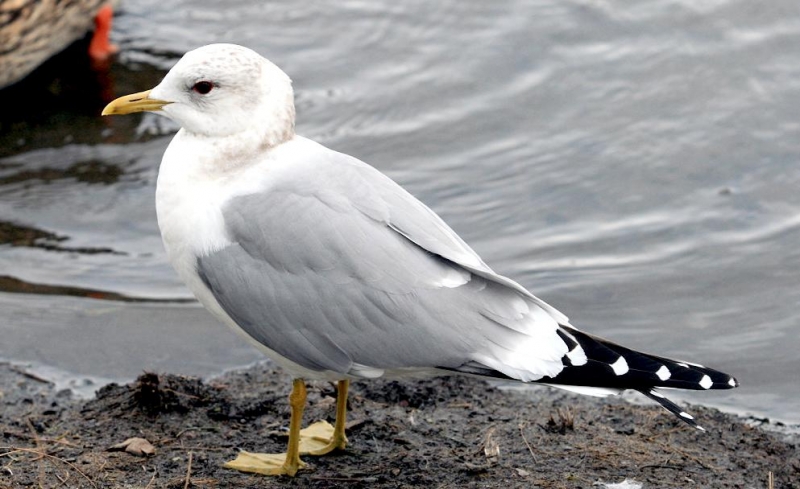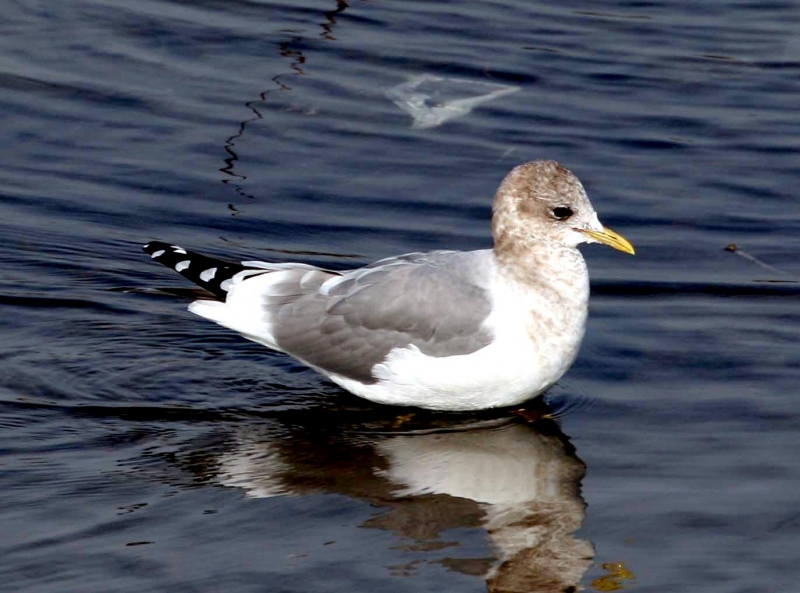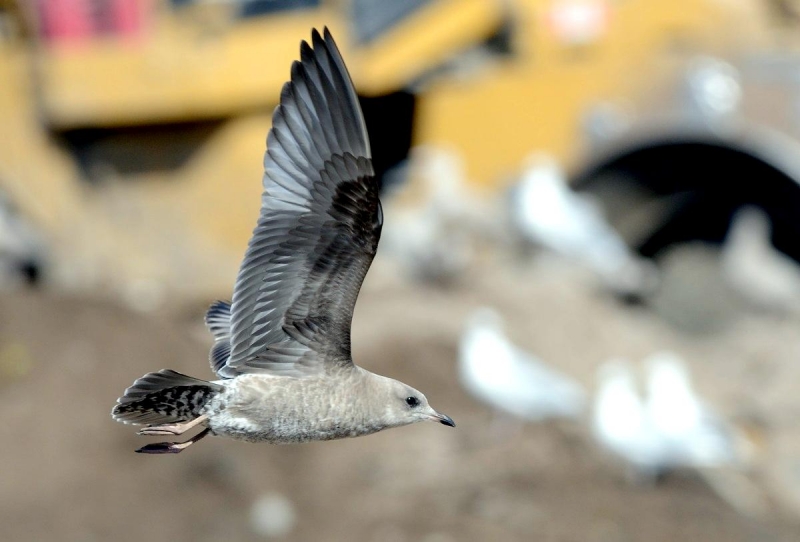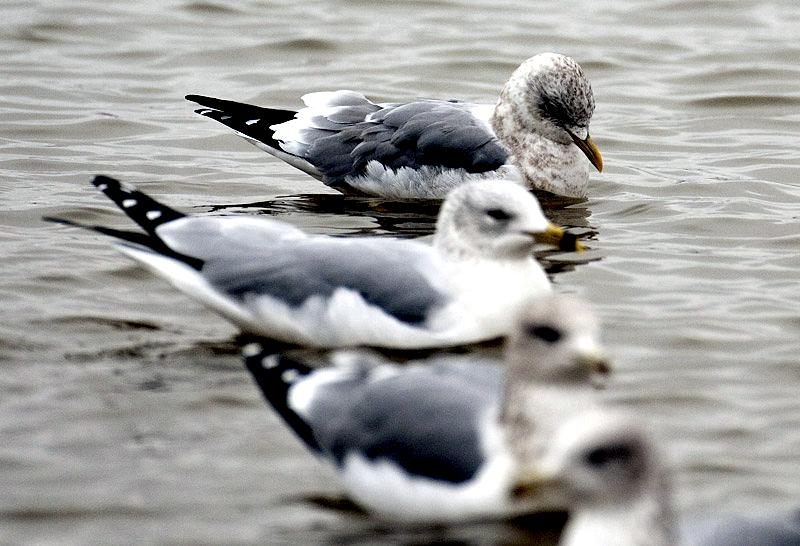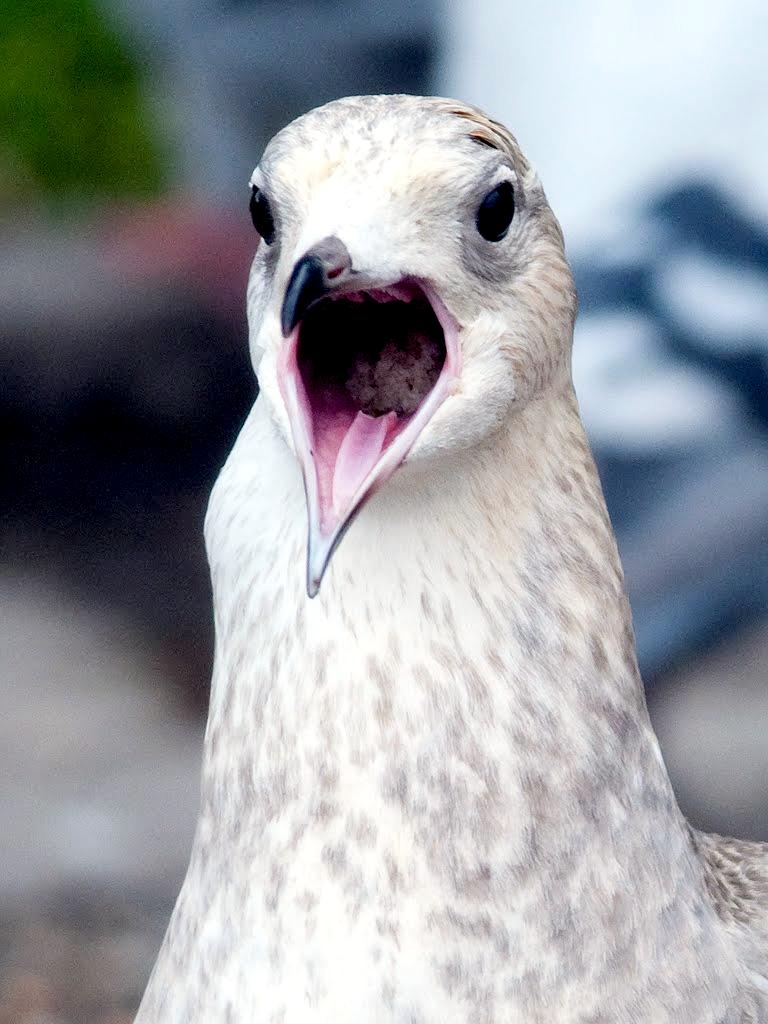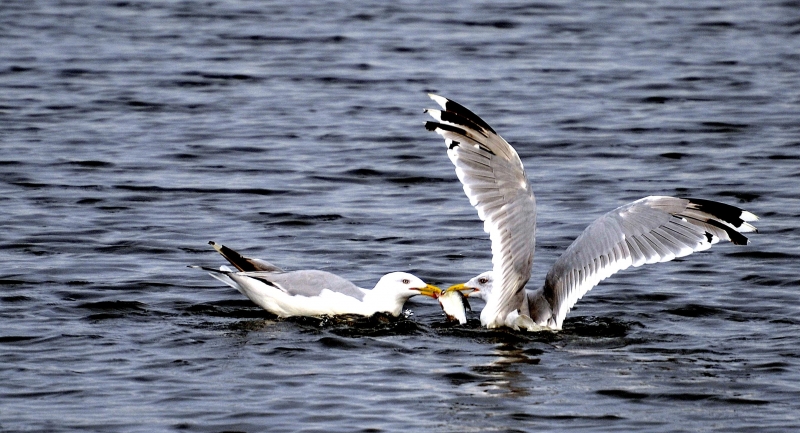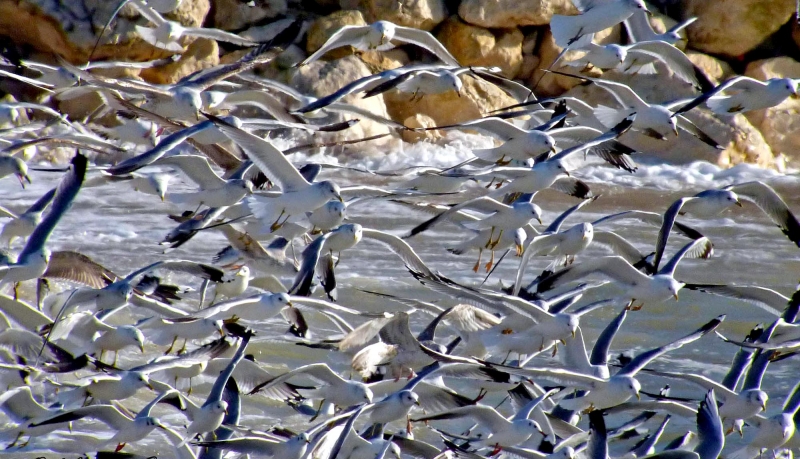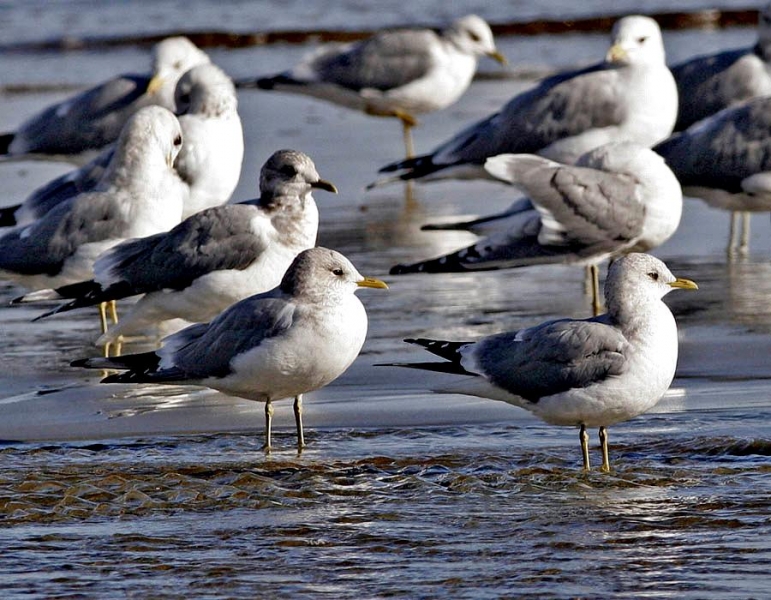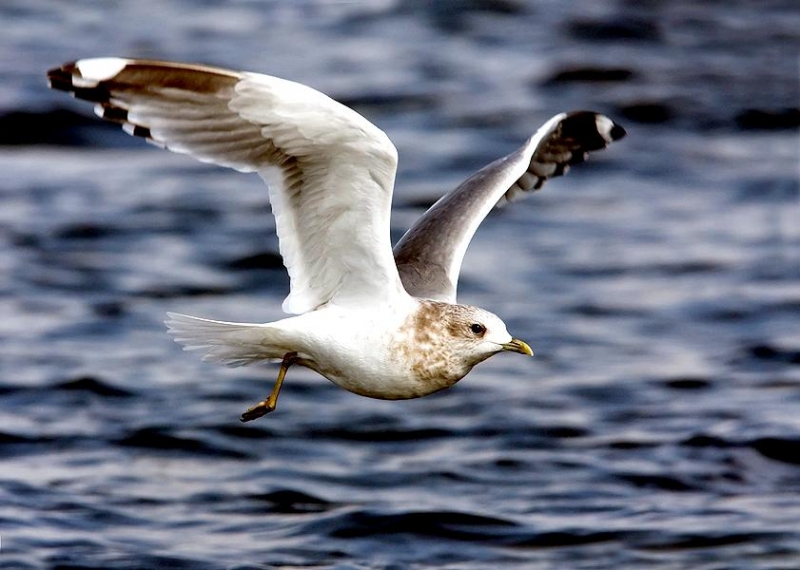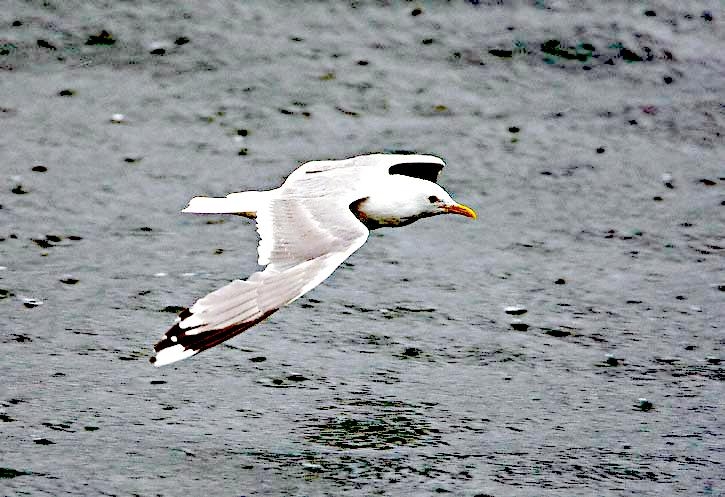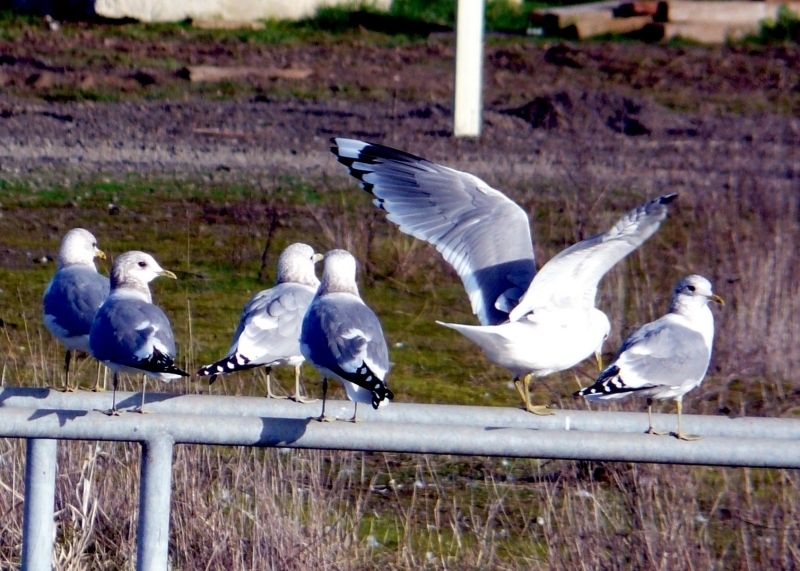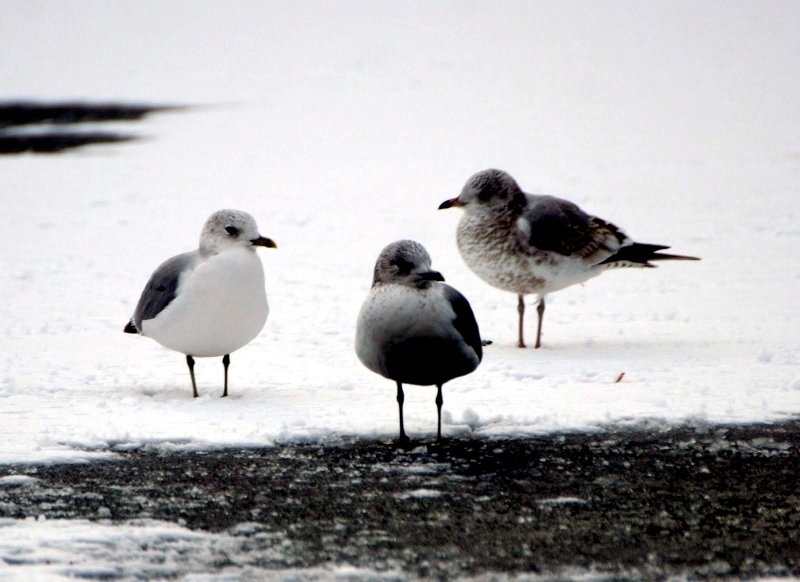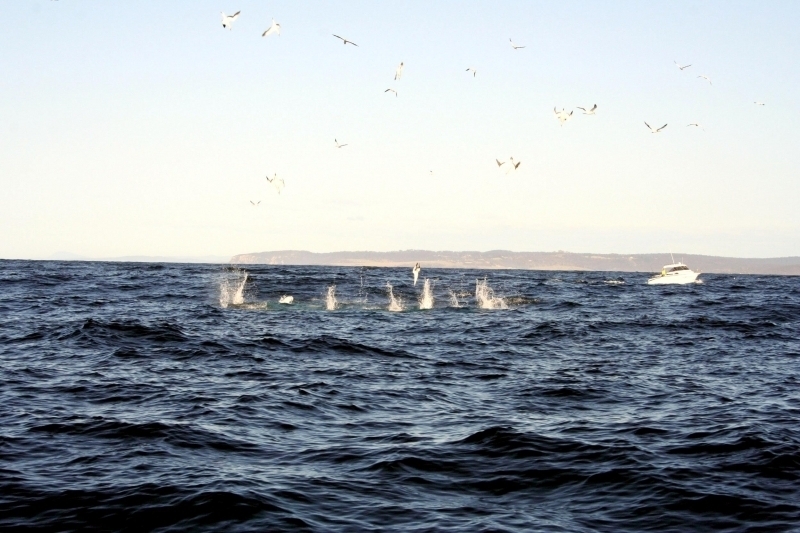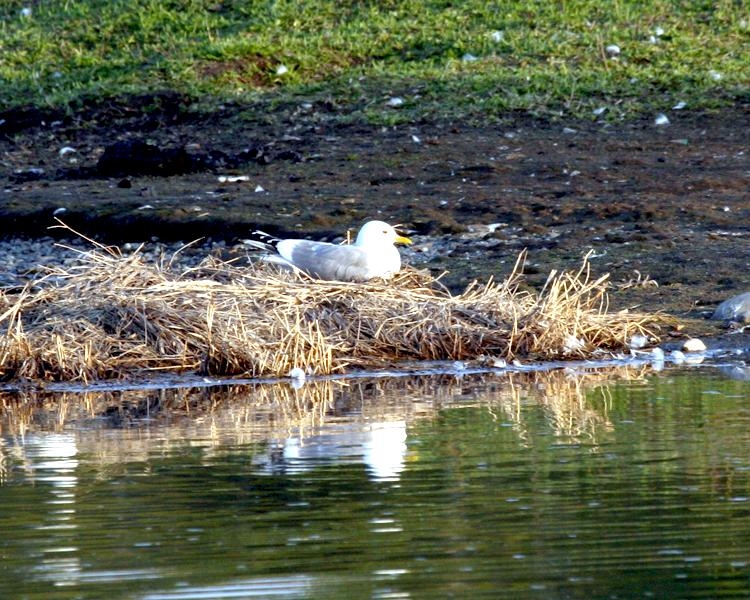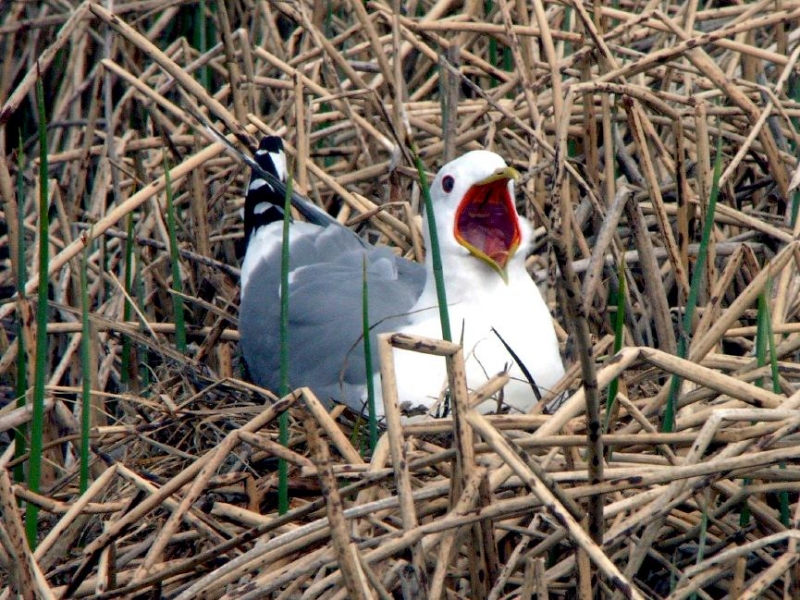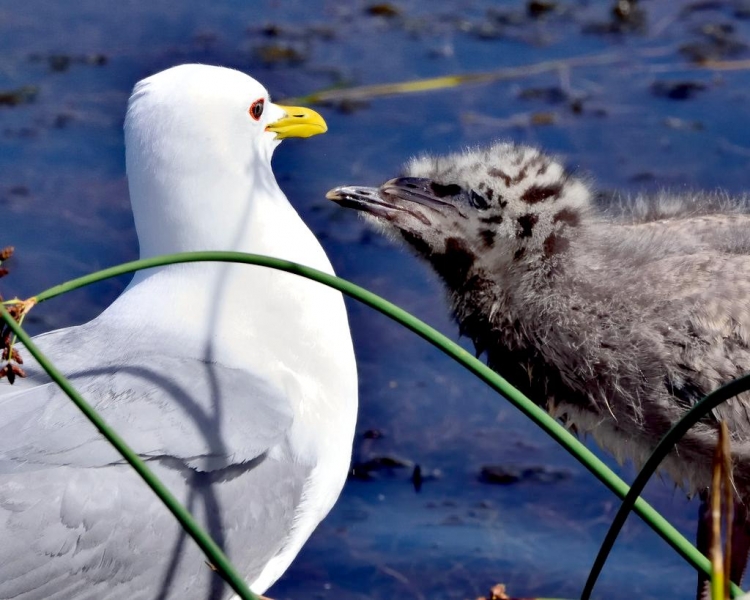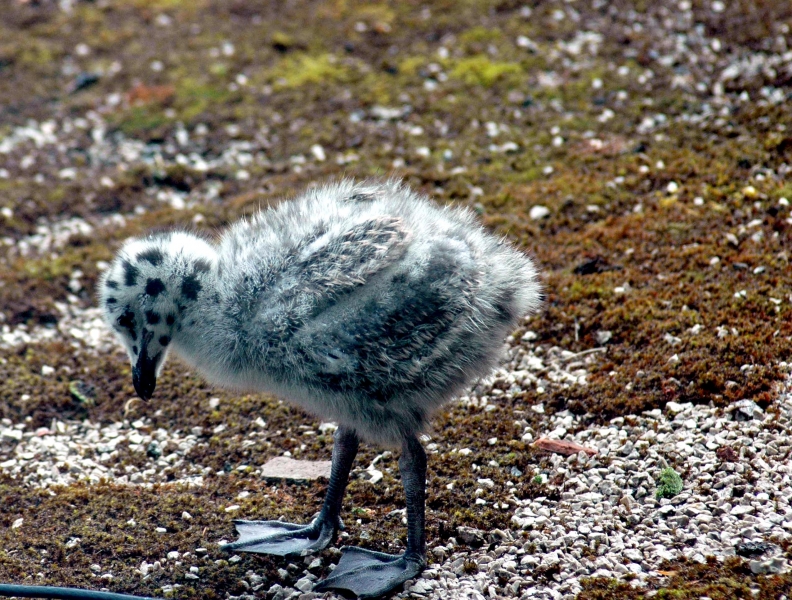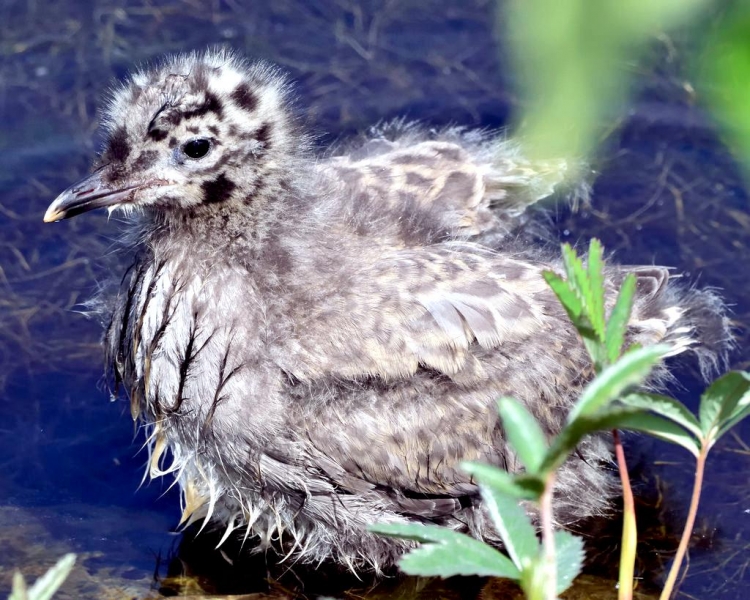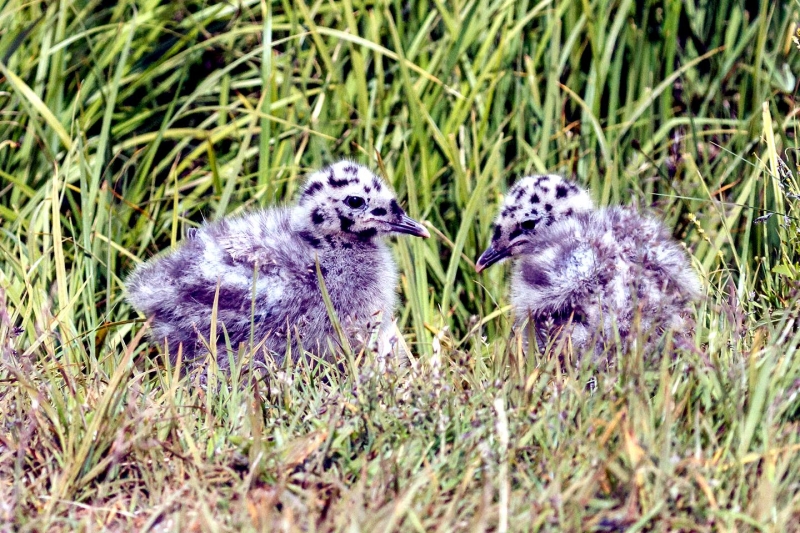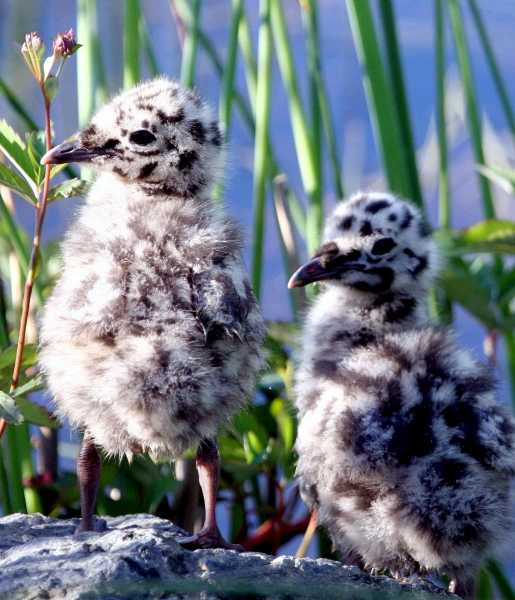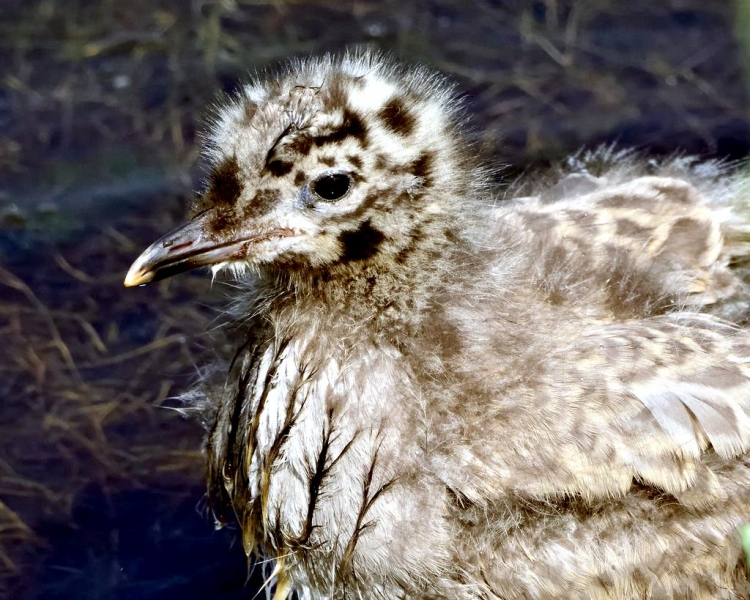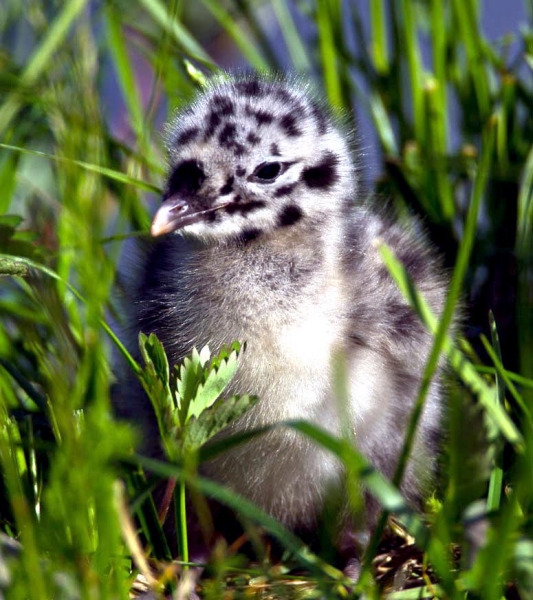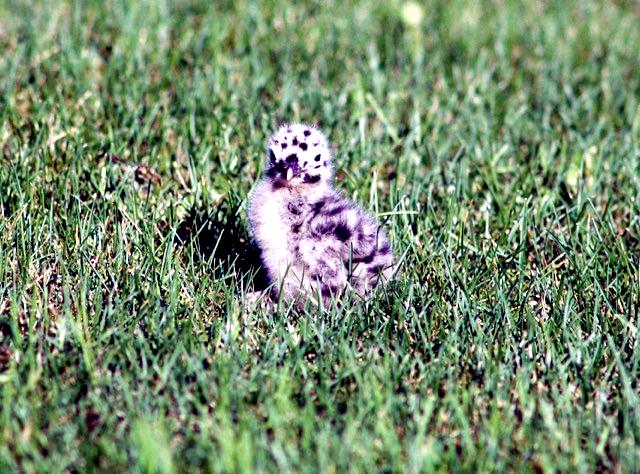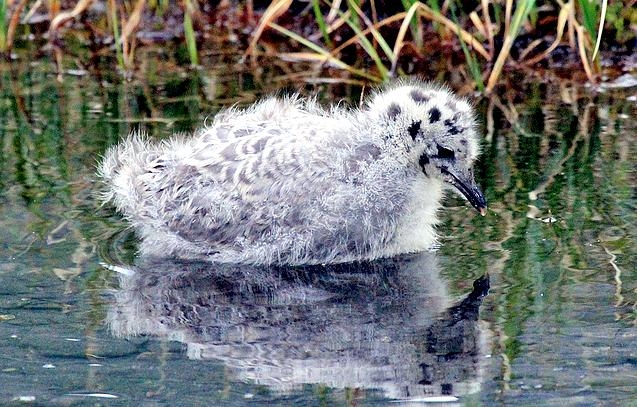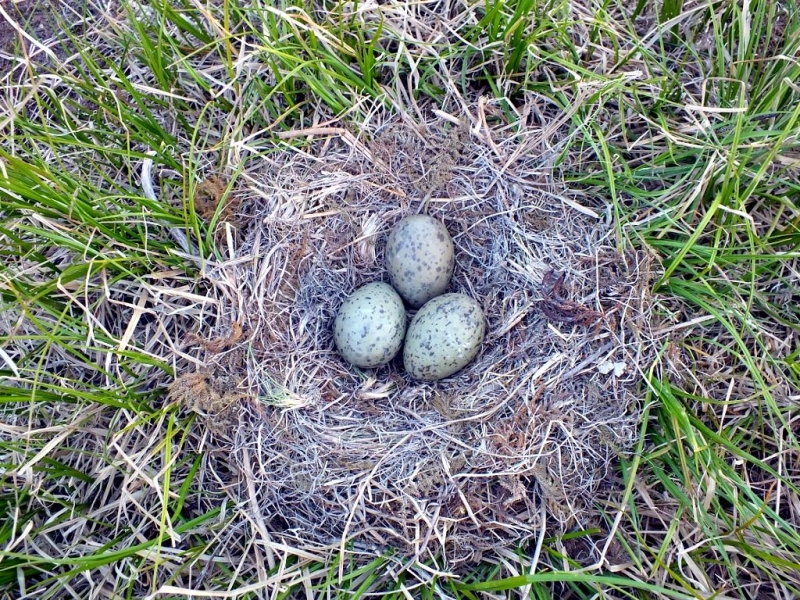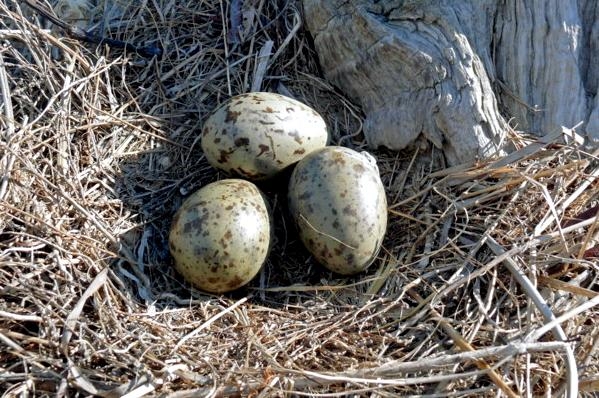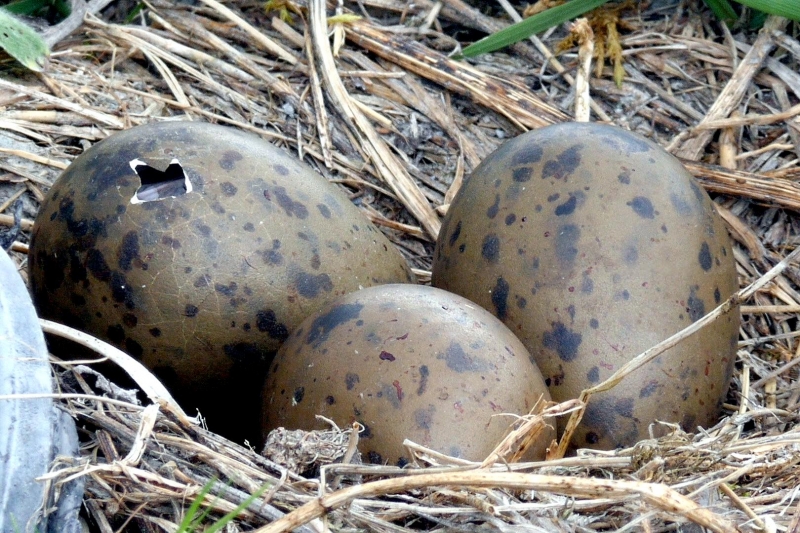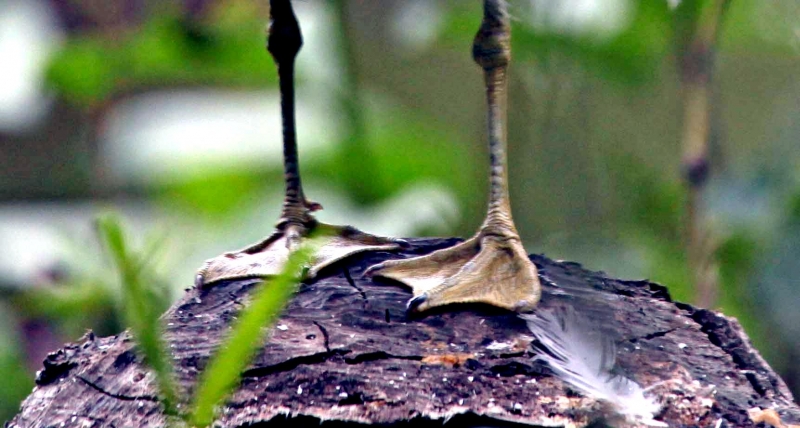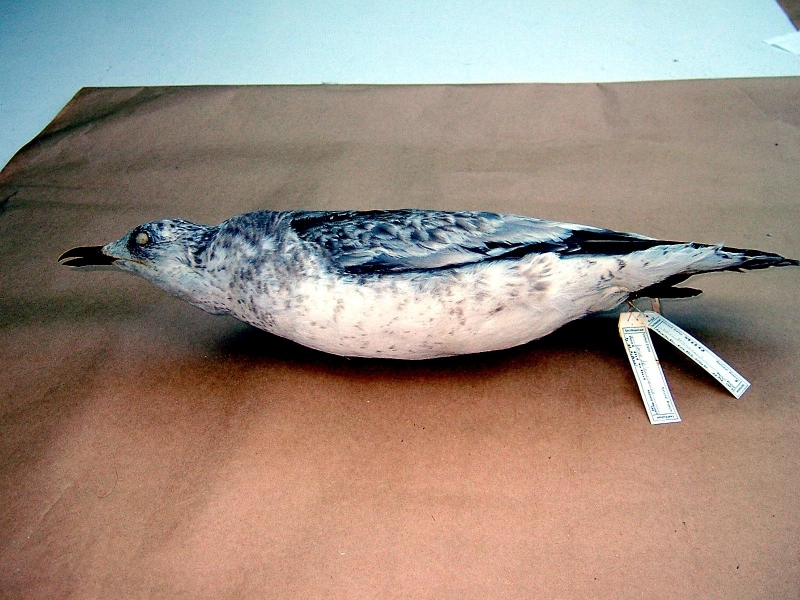“Larus canus”
The Mew Gull is a medium-sized gull most similar in appearance to the Herring Gull and often erroneously mistaken for them. The Mew Gull is distinct from most other gulls because of its green-yellow colored legs as well as a yellow bill with a black stripe on its beak. The Mew Gull is named for the cat-like call it often gives. The Mew Gull is rarely found inland and most commonly on coasts. This led to its historical name the “Sea Mew”, they may be seen in towns and other urban areas during winter months. Generally, they spend summers further north & winters further south than their resident areas.
Their diet is wide ranging as omnivores, eating virtually anything from insects, fish and worms to rubbish. Mew Gulls snatch & scavenge for food, rarely hunting unless necessary and then it is just smaller prey. Feeding is usually accomplished in scrub-land near to estuaries in their resident locations prior to migrating. They graze on pastures in coastal regions and may be seen on marshes, lakes or other wetland areas in winter while they visit the coast more during summer. Other characteristics include black wingtips after a thick white band on their wings and a high pitch call. Like most gulls, they are grey on the top & white below. When young, the Mew Gull is brown & black in color with grey legs. All Mew Gulls breed in colonies in locations near water especially coastal marshes. They can make creased nests on trees and sometimes on the ground. A female Mew Gull usually lays 2 or 3 eggs occasionally laying more and colony sizes can have in excess of 200 pairs but these sizes vary by great margins as only a few pairs maybe needed for a colony.
